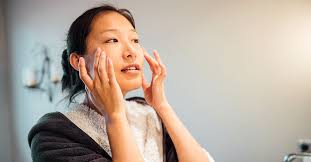
How Long To See Benefits Skin Care Routine?
It is safe to say that we have all, at one time or another, thought that applying a new serum to our skin will “fix everything” only to feel quite disheartened by morning to find it hasn’t.
Don’t be feeling too down in the dumps, as today I am going to share with you in more detail how long exactly you can expect to see the benefits of using any bespoke skincare routine, so let’s get started.
How long should a skincare routine take?
Before we start our discussion about skincare benefits, we must first explore what the skin actually does and how skincare routines can either help or hinder the final results. Everyone’s skin has a cycle, by this I mean the process of how the skin is rejuvenated and how new skin cells are developed. During a course of 28 days the new skin cells make their way up through the layers of the skin until they reach the surface. This generally leads to the old layer of dead skin cells to shed away from the face. This entire process slows down as we age and can take roughly 60-90 days once we have reached our 50s and over. This is an example of how the process should take place, however, there are some hurdles that interfere along the way such as dead skin cells remaining on the epidermis resulting in a build-up of cells and bacteria which leads to spots, flaky, uneven skin tone and signs of premature ageing.
This is exactly why it is vital for the health of your skin to begin a daily routine. No matter what age you are, establishing a daily skincare routine will not only give your skin clarity and a healthy appearance, but you will find any concerns you had will be reversed. But as I have previously mentioned, none of this will happen overnight (no matter how convincing the packaging may be) Instead you can expect to see the first set of results after consistently using a skincare routine for 4 weeks and then further results between 6-8 weeks.
Results after 4 weeks use
Acne and blemishes significantly reduced
Flaky patches of skin reduced
Skin looks moisturised with no signs of dehydration
All over healthy glow to the complexion
Results after 6 weeks
All of the above mentioned
Signs of premature ageing such as fine lines notably less visible
Areas of pigmentation becoming lighter in appearance
Results after 8 weeks
All of the above mentioned
Signs of more deep-set wrinkles reduced in appearance
Skin ageing, such as sagging visibly improved
Pigmentation and dark spots visibly reduced
Bear in mind, these are the results you can expect to see if you have a skincare routine that includes potent ingredients that can target the skin concerns mentioned.
How do I know my skincare routine is working?
For this it is quite easy to figure out, and that is, if your skin is feeling comfortable, hydrated and clear, then chances are you are applying the right ingredients for your skin type and any concerns you have. Your skin should look vibrant and smooth whilst not feeling or looking dry, if however, you are experiencing any form of discomfort you must stop using all new products immediately. If you are having difficulty trying to find which skin type you are then check out our dedicated blog post about the 4 most common skin types.
How long does it take to improve my skin texture?
This surprisingly can be very fast and after one to two weeks you can expect to see a vast improvement of the skin’s texture. This is quite often achieved by introducing a skincare product that contains chemical exfoliating ingredients like AHAs and BHAs, such as glycolic acid and salicylic acid. It is these facial acids that work wonders on improving the skin’s texture as they work at dissolving the glue holding the bonds of dead skin cells making them easier to slough off the surface of the skin. Thereby leaving you with a smoother more vibrant complexion. You can find out every about these acids on our blog post about what AHAs and BHAs are and their skin benefits.
How long does it take for skincare products to absorb?
When applying your skincare routine, it is said that leaving a good amount of time between products allow the skin to benefit from the application. Typically speaking, around 30 minutes is the amount of time it takes for skincare products to absorb into the skin. This can sometimes vary between each product and the which ingredients are blended into the formulation. Build-up of dead skin cells and layer of dirt, bacteria and debris can also interfere with the effectiveness of any potent ingredients or formulas as they would not be able to penetrate through the barrier created on the outer layer of the skin. Ensuring you have fully cleansed the skin before using an acid toner will remove anything that may get in the way, you will also find you notice quicker results too.
How do I know if my skin doesn’t like my product?
You will certainly know if your skin isn’t enjoying a product you are applying to it. Though there may not be severe reactions or side effects, any form of irritation, from redness to flaky patches on the face are all signs you should stop using the product. We always advise to perform a patch test on the inner forearm for at least 24 hours to avoid any unwanted flare-up or skin irritation. You can also consult a doctor or dermatologist if you are still unsure and they will guide you to the best products and routine best suited for you and your skin type.
There you have some answers for any worries you had concerning your skincare routine and how long you can expect to see any results. If you are wanting to know more about skin, need any advice or fancy sharing your tips and trick, please find us over on our Instagram.


